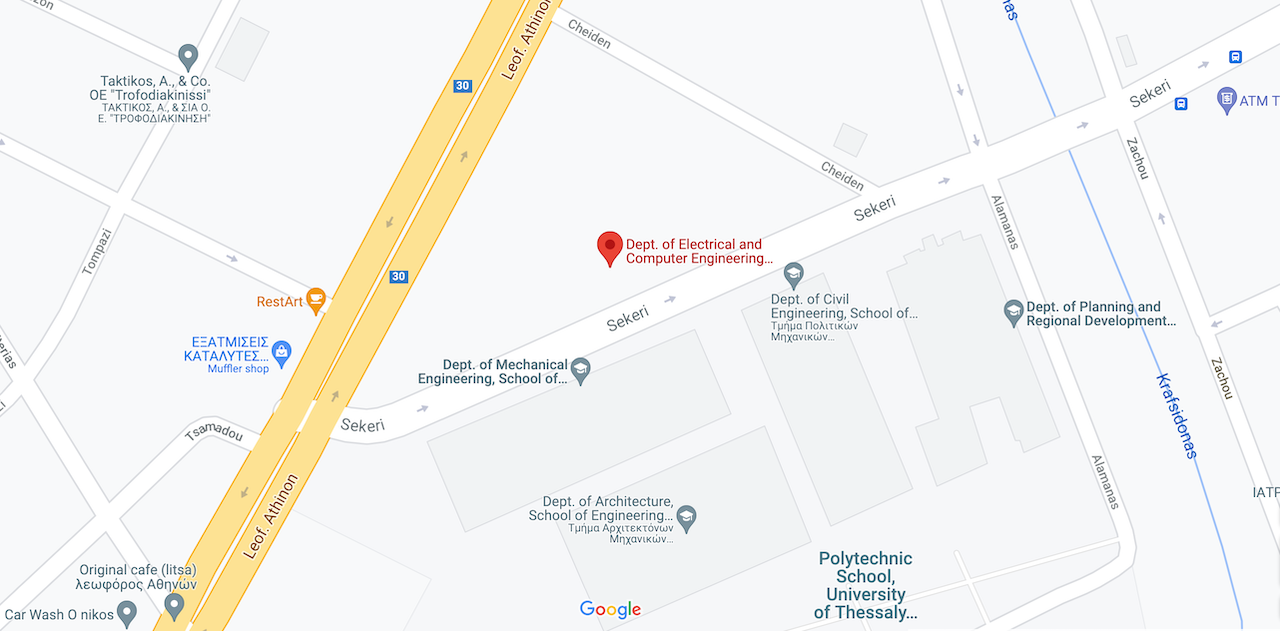| Subject Area | Energy |
|---|---|
| Semester | Semester 6 – Spring |
| Type | Elective |
| Teaching Hours | 4 |
| ECTS | 6 |
| Prerequisites |
|
| Recommended Courses |
|
| Course Site | https://eclass.uth.gr/courses/E-CE_U_150/ |
| Course Director |
|
| Course Instructor |
|
The subject starts with coverage of the full spectrum of modern power semiconductor devices, their characteristics, both static and switching. Modern power semiconductor devices eg, diodes, thyristors, MOSFETS, and other insulated gate devices such as the IGBT, MCT and the FCT; Static and switching characteristics, gate drive and protection techniques; their drive circuit design and protection techniques including the snubber. Various topologies of power converter circuits are then treated, together with analysis of their operation, control characteristics, efficiency and other operational features. These include major areas of applications in AC-DC, DC-DC, and DC-AC power converter circuits. Analyses of input and output waveforms of these circuits so as to obtain their harmonic performance are also undertaken. A basic understanding of devices, circuit principles and implications in input/output waveform quality is stressed throughout the subject. Application considerations for remote and un-interruptible power supplies, and for computer systems, telecommunications, automobiles, traction and other industrial processes; Utility interaction, harmonic distortion, and power factor will also be included.
This course aims to equip the student with a basic understanding of modern power semiconductor devices, their strengths, and their switching and protection techniques. These include power diodes, bipolar and MOSFET power transistors, other gate-controlled devices such as thyristors, insulated-gate bipolar transistors (IGBT) and gate turn-off thyristors (GTO). Various important topologies of power converter circuits for specific types of applications are covered and analyzed. These include controlled and uncontrolled rectifiers, DC-DC converters and inverters. The course also equips student with ability to understand and analyze the qualities of waveforms at input and output ends of these converters. The quality of these waveforms is of major concern to users of modern power converter circuits and the utility authorities alike
At the conclusion of the course, the student is expected to:
- Have a basic understanding of modern power semiconductor devices, their strengths, and their switching and protection techniques. These include power diodes, bipolar and MOSFET power transistors, other gate-controlled devices such as thyristors, insulated-gate bipolar transistors (IGBT) and gate turn-off thyristors (GTO).
- Understand the operation and develop analysis skills of several important topologies of power converter circuits for specific types of applications. These include controlled and uncontrolled rectifiers, DC-DC converters and inverters.
- Understand and analyze the qualities of waveforms at input and output of these converters. The quality of these waveforms is of major concern to users of modern power converter circuits and the utility authorities alike.







